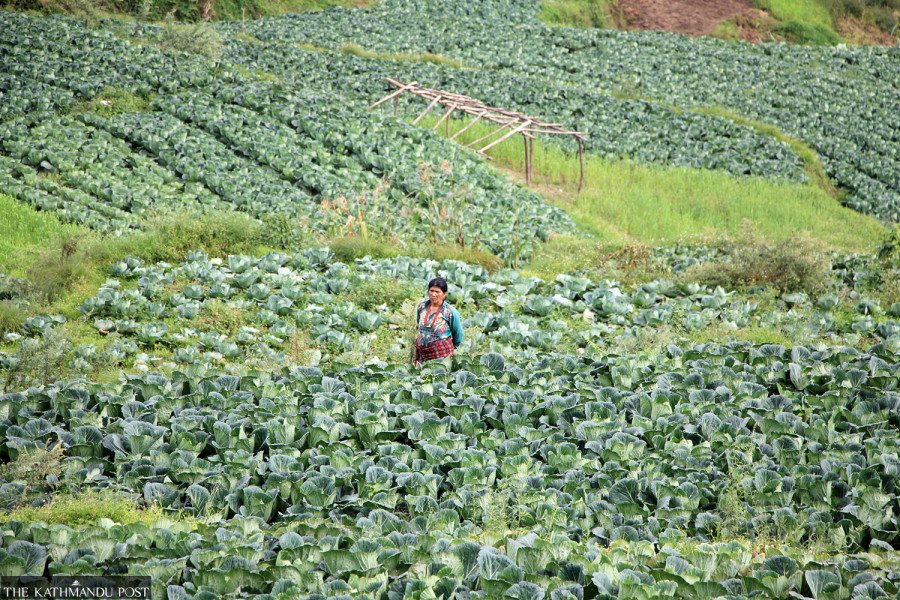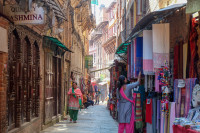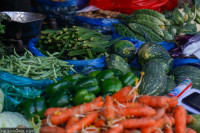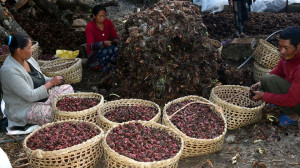Money
Gandaki leads as 4 provinces outpace national GDP growth
The National Statistics Office estimates Bagmati has the highest per capita GDP and Madhesh has the lowest, as most provinces fall below national average.
Post Report
Four provinces—Gandaki, Bagmati, Karnali, and Lumbini—are projected to post economic growth rates higher than the national average in the current fiscal year, which ends in mid-July. These projections come from the latest provincial GDP estimates published by the National Statistics Office on Monday.
The economy is forecast to expand by 4.61 percent at the national level, reaching a total GDP of Rs6.17 trillion.
Among the provinces, Gandaki is expected to lead with the highest growth rate of 5.51 percent at consumer prices. Bagmati follows with a projected growth rate of 5.18 percent, Karnali 4.74 percent, and Lumbini 4.70 percent.
In Gandaki, growth is primarily supported by the agriculture, forest, and fishery sectors, which are projected to contribute 27.10 percent to the province’s GDP. The administration and assisting service sector is expected to contribute the least, at just 0.32 percent.
Bagmati’s growth, on the other hand, is driven primarily by the wholesale and retail trade sector, which contributes 22.55 percent. In contrast, the water supply, sewage, and waste management sector is projected to have the smallest share, at 0.27 percent.
Karnali province shows the most substantial reliance on agriculture, forest, and fishery activities, which are expected to contribute 31.50 percent to the provincial GDP. Mining and excavation are projected to have a minimal impact, with just 0.17 percent.
Similarly, Lumbini's economy is supported by the agriculture, forest, and fishery sectors, expected to contribute 31.02 percent, whereas administration and assisting services are expected to have only a 0.35 percent share in the GDP.
Sudurpaschim province is estimated to have the lowest growth rate among the seven provinces, at 3.32 percent. Despite this, its economic activity is still expected to be dominated by the agriculture, forestry, and fisheries sector, contributing 34.72 percent to the GDP. The smallest contribution in this province is also expected from the administration and the service sector, with just 0.13 percent.
Madhesh and Koshi provinces are projected to grow by 4.50 percent and 3.34 percent, respectively.
In Madhesh, agriculture, forest, and fishery are expected to provide the largest share of GDP at 36.73 percent, while the mining and quarrying sector is projected to contribute the least at 0.15 percent.
Koshi follows a similar pattern, with 34.05 percent of its GDP expected to come from agriculture-related activities, and just 0.32 percent from administration and assisting services.
Looking at the broader picture, Bagmati province is projected to contribute the most to the national GDP, accounting for 36.52 percent. This is followed by Koshi at 15.90 percent, Lumbini at 14.23 percent, Madhesh at 13.16 percent, Gandaki at 8.98 percent, Sudurpaschim at 7.03 percent, and Karnali at 4.19 percent.
The National Statistics Office notes that these contributions have mainly remained stable compared to revised estimates from the previous fiscal year 2023–24.
Contributions from Koshi, Gandaki, Lumbini, Karnali, and Sudurpaschim have seen slight declines, while Madhesh and Bagmati provinces have experienced modest increases.
A sectoral analysis of industrial classifications indicates that agriculture remains the leading contributor to provincial GDP in all provinces except Bagmati.
In Bagmati, wholesale and retail trade remain the top economic drivers. This sector also holds the second-largest contribution to GDP at the national level and maintains that position in both Koshi and Madhesh provinces.
In Bagmati, real estate services, particularly those related to land and property transactions, occupy the second-largest share.
In provinces such as Gandaki, Lumbini, Karnali, and Sudurpaschim, the public administration and defense services sector comes in second. However, regarding industries making the smallest contributions, public administration-related services are the least significant in all provinces except Bagmati, Madhesh, and Karnali.
The lowest contribution is recorded from the Bagmati water supply and waste management activities. In Madhesh and Karnali, the mining and quarrying sector ranks lowest in GDP contribution.
Despite the differences in sectoral weight across provinces, all sectors are estimated to exhibit positive growth in the current fiscal year. The electricity and gas sector stands out nationally with the highest estimated growth rate of 13.82 percent. This sector is projected to lead growth in all provinces except Lumbini and Karnali, where transportation and storage are expected to be the fastest-growing sectors.
On the other hand, mining and quarrying activities are expected to show the slowest growth in Bagmati, Lumbini, and Karnali.
The water supply, sewerage, and waste management sectors are estimated to grow the least in Koshi and Sudurpaschim. In Madhesh, the education sector lags in development, while in Gandaki, public administration and defense services are expected to expand the least.
Overall, the provincial GDP projections highlight the continuing importance of the agriculture sector to Nepal's economy while also showcasing regional variations in growth patterns and sectoral contributions.
In the fiscal year 2024-25, the preliminary estimate of per capita GDP is highest in Bagmati province and lowest in Madhesh province.
The per capita GDP of Bagmati is $2,602, Gandaki $1,619, Koshi $1,401, Lumbini $1,201, Sudurpaschim $1,153, Karnali $1,089, and Madhesh $932.
At the national level, the preliminary estimate of per capita GDP for the current fiscal year is $1,496.
These figures indicate that, except for Bagmati and Gandaki provinces, the per capita GDP of all other provinces is below the national average.




 6.73°C Kathmandu
6.73°C Kathmandu














